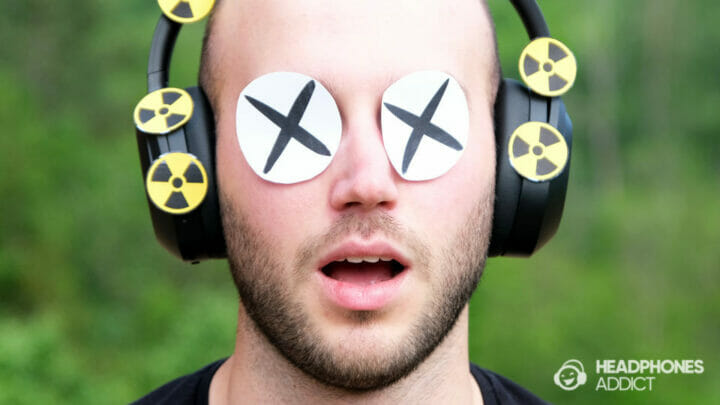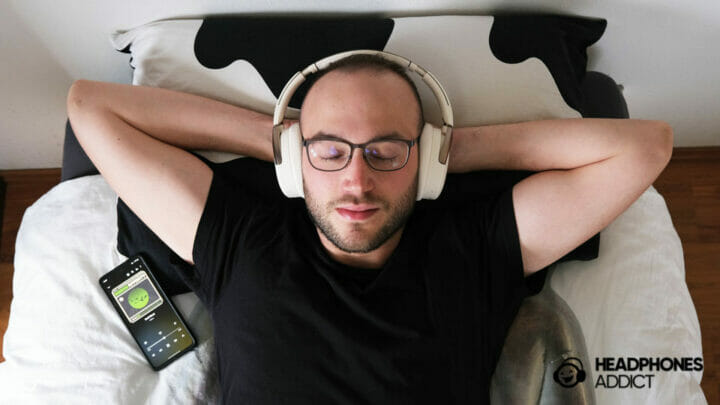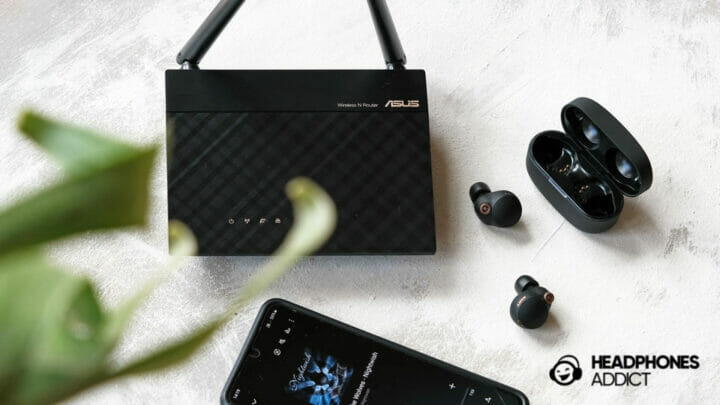Bluetooth is non-ionizing radiofrequency (RF) radiation that has been dividing people regarding its safety. We take a look at different scientific studies in search of the answer.
Learn about different types of radiation, which ones are dangerous, and whether wired headphones emit radiation or not.
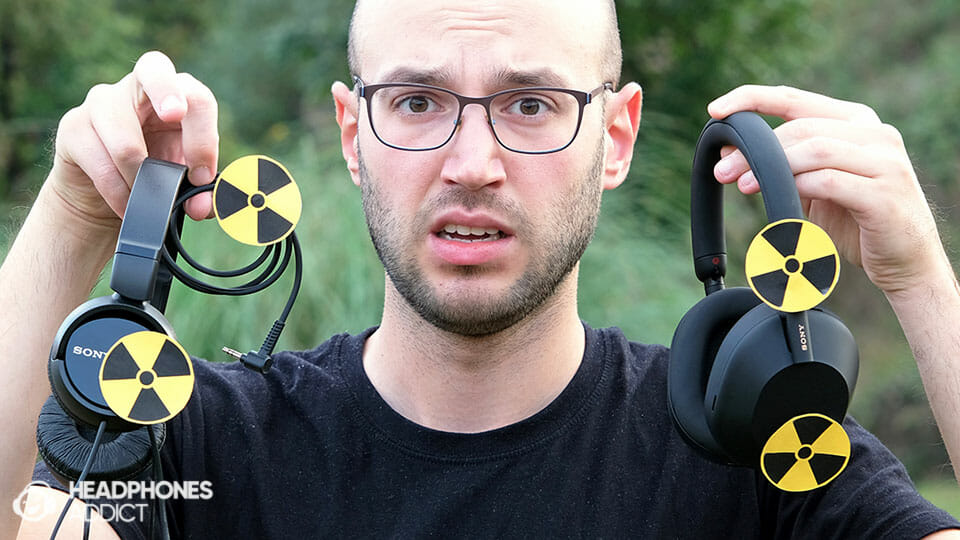
- Headphones can produce different kinds of radiation: acoustic (sound), ELF (from cables and transducers), and non-ionizing RF radiation (if they’re wireless).
- Bluetooth headphones and earbuds emit non-ionizing electromagnetic radiation that shouldn’t exceed 2.5mW of power, making Bluetooth the consumer wireless technology with the weakest radiation.
- Radiation from wired headphones is probably safer than Bluetooth since cables are better shielded to prevent electromagnetic radiation from going in and out.
- So far, there’s no scientific proof of a connection between Bluetooth and health issues in humans, but you should still avoid placing wireless devices near (male) reproductive organs.
- You can minimize Bluetooth exposure by turning it on only when needed, keeping transmitting and receiving devices as close as possible, and not using them for hours straight.
What is Radiation from Headphones?
Radiation from headphones comes in the form of sound and electromagnetic radiation from wireless technologies (like Bluetooth), wires, and magnets inside transducers.
What is radiation?
Radiation is essentially a transfer of energy. Transfer happens with:
- Molecules (sound is radiated by vibrating the air molecules (acoustic radiation); thus, sound isn’t part of the electromagnetic spectrum)
- Atoms (when atoms absorb electromagnetic energy, it displaces their electrons, creating electromagnetic waves)
Firstly, you must understand that there are many types of radiation:
- Sound
- Radio
- Wi-Fi
- Visible light
- Heat
- X-rays
All of these are radiation. Meaning that you shouldn’t fear something just because it uses the word “radiation.”
(Bluetooth) headphones use non-ionizing types of radiation. Learn what that is and why it differs from ionizing radiation below.

Non-ionizing radiation
Before we continue, we need to clarify that some (reputable) sources call non-ionizing radiation “extremely low-frequency radiation” (ELF), which is technically inaccurate. ELF represents frequencies between 3 Hz and 300 Hz, whereas non-ionizing spectrum spans from 1 Hz to 750 THz.
Main key points of non-ionizing radiation (let’s call it “NIR” going forward):
- Inconclusive data on whether NIR causes cancer or increases the chance of getting it.
- It can’t damage DNA.
- It can agitate tissue and make it hot.
NIR spans from 1 Hz to 750 THz (frequency of a visible blue light).
Things that emit NIR are:
- Visible light
- Infrared light
- Radio
- Anything with a wire using a 50 Hz or 60 Hz electrical current (house wiring, home appliances, TVs, headphones, etc.)
Why low frequency/energy radiation can’t damage your DNA?
Low frequency/energy radiation can’t damage your DNA because it doesn’t have enough energy, and its wavelength is bigger than your DNA molecule.
Depending on the frequency and energy, the radiation can either go through you or your body absorbs it. Higher frequencies get absorbed more easily, so they must radiate with greater power to go through your body or travel larger distances.
However, even with more energy, non-ionizing frequencies aren’t small enough to directly disturb the DNA molecule, a tiny part of your body cells.

On the other hand, NIR can disturb bigger molecules, most notably water and air molecules.
For example, microwaves operate at the same 2.45 GHz frequency as your Wi-Fi, Bluetooth, and smartphones (sometimes). However, the amount of energy is what prevents your router from turning you into a Sunday roast.
A high-frequency electromagnetic field transfers its energy to other molecules via dielectric heating.
2.45 GHz frequency is used because it has good penetration properties, can agitate the water, fat, and sugar molecules, and because it is “royalty-free”, so anyone can use it.
- 60 GHz is another free-to-use frequency, but it is less ideal as it gets easily absorbed by air, walls, and human bodies. Despite that, there are ideas to use it as a Wi-Fi frequency to only cover one room.
- Military also designed an “Active Denial Technology” using 95 GHz for crowd control and non-lethal combat, as high energy radiation makes your skin really hot, causing you to flee away.
Why use higher frequencies for data transfer if lower seem safer?
Companies are constantly raising frequencies for data transfer (for example, Wi-Fi jumped from 2.4 GHz to 5 GHz, with the latest versions supporting a 6 GHz band) because higher frequencies can carry more data.
In a world where users constantly ask for higher data transfer speeds, picking a higher frequency is necessary.

Ionizing radiation
Ionizing radiation exceeds 750 THz and has tiny enough waves to harm a DNA molecule.
You can find ionizing radiation coming from:
- Sun
- X-ray machines (CT included)
- Gamma rays (occur during a nuclear explosion, also found in the universe)
You normally find ionizing frequencies carrying a lot of energy, so they pierce right through you. That is dangerous if they hit a DNA molecule in your cells.
Damaged DNA can self-repair or “go rogue”, ordering a cell to produce more cells with the rogue DNA. If your immune system can’t destroy all the rogue cells, you get a tumor, which can be cancerous.
Do Bluetooth headphones and earbuds emit radiation?
Bluetooth headphones and earbuds emit non-ionizing, low-energy radiation. You’re exposed to NIR (non-ionizing radiation) from Bluetooth and ELF (extremely low-frequency radiation) from electrical current inside electrical components (wires, chips).

Out of all consumer wireless technologies, Bluetooth (at least the Class 2 category used in consumer gadgets) radiates at the lowest power. Even Wi-Fi is stronger.
Bluetooth devices are separated into 3 classes:
- Class 1: up to 100 feet in range, operates at higher power
- Class 2: up to 33 feet in range, operates at lower power
- Class 3: up to 10 feet in range, operates at very low power
Here are the overall power levels of gadgets we normally use:
| Bluetooth | Smartphones | Wi-Fi router |
|---|---|---|
| Around 2.5mW (Class 2) | Up to 600mW (during a call) | Less than 100mW, but can go up to 1000mW in high power mode |
Consequently, the radiation is negligible. You don’t even experience a slight skin-warming effect like smartphones during phone calls.
Researchers at Stanford found that during a 20-minute phone call, tissue near a cell phone heated up by 32.7°F (or 0.43°C) max. Given that phones radiate at much higher energy and can’t cause damage, it’s safe to say Bluetooth is even safer.
In the case of Wi-Fi, there’s no definitive answer as to whether it causes cancer (one study finds a potential link, another disproves it), let alone Bluetooth, which operates at much lower power.
Bluetooth vs. Wired Headphone Radiation: Which is Safer?
Bluetooth
As we established before, Bluetooth radiates at around 2.5mW of power, which is extremely low, way less than other wireless technologies we use daily.
Compared to other tech that operates at 2.4 GHz, Bluetooth is meant for close-range communication that doesn’t require high data speeds (unlike LTE, 5G, and Wi-Fi). Therefore, it doesn’t need to broadcast at high power.

Given the currently known facts about non-ionizing radiation and the inability of Bluetooth to heat tissue during long periods, it is perfectly safe to use on a daily basis.
Wired
On the other hand, most portable audio playback devices (like mobile phones) output around 31.6mW of power through their AUX port, with headphone amps going above 3,000mW.

However, with cables, you must remember that:
- Most of the power actually comes from points A to B, with very little loss in the form of radiation or heat.
- Most cables have at least basic shielding to prevent radiation interferences from coming in and out.
When it comes to extremely high voltage cables, the 2016 study found a potential link between childhood cancers and living very close to powerlines (under 164 feet), whereas the risk of cancer reduced to a minimum when living further away.
However, more research needs to be done to more accurately locate the cause. Also, it is a bit unfair to compare power lines with a very low-voltage headphone cable.
Potential Health Effects of Wireless Headphone Radiation
Based on current data, exposure to NIR isn’t harmful to humans, especially if the radiation is weak, like with Bluetooth.
However, ever since a bunch of scientists from EMFscientist signed a petition to strengthen the guidelines regarding exposure to non-ionizing radiation, calling it cancerogenic, many ordinary people have started freaking out.
Let’s see what studies specifically on Bluetooth headsets have to say about that:
- One study examined whether radiation from a Bluetooth headset causes deterioration of the cochlear nerve (the inner ear that “translates” physical vibrations into electrical signals your brain can understand). The study found no impact on the nerve’s activity. A similar Italian study also came to the same conclusion.

On the other hand, there are a lot of studies regarding cell phones, which can use similar frequencies as Bluetooth:
- An INTERPHONE international study found no conclusive connection between heavy cell phone use and increased risk of glioma (brain cancer).
- A Danish cohort study also found no direct connection between long-term cellphone use and increased risk of brain tumors or cancers.
- The most notable study that found an association between heavy exposure to 2G and 3G signals and malignant heart tumors was done on lab rats. However, rats received full-body exposure and much higher radiation exposure (from 3 to 9W per kilogram of body weight) than you normally get from your cellphone (legal limit is 1.6W/kg). And for a much longer time (18 hours per day, with 10-minute intervals). ICNIRP later questioned those findings.
- Another study on rats also showed an increased risk of heart cancer, but its finding remains questionable due to many unexplained gaps in the research.
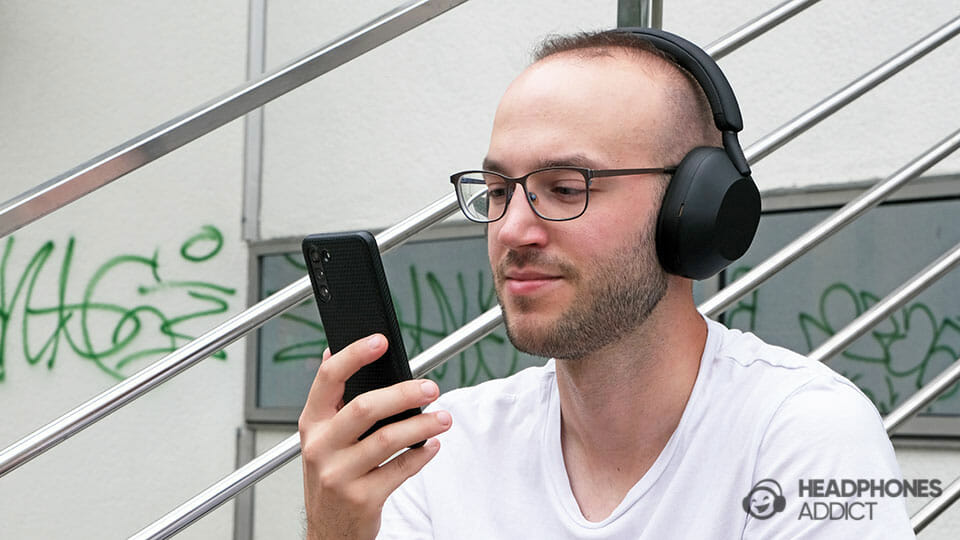
How to Minimize Radiation from Headphones?
While current data suggests that exposure to RF signals, Bluetooth included, is safe for humans, the International Agency for Research on Cancer classified the NIR from RF signals as “possibly cancerogenic“.
Therefore, there is nothing wrong with minimizing cumulative exposure to excessive radio-frequency radiation, especially from devices you have at home.
- Turn off wireless devices or settings (like Bluetooth on your smartphone) when not in use. That way, your devices won’t broadcast and try to pair unnecessarily, saving some battery in the process.
- Reduce the usage of wireless headphones. Many studies show that the longer the exposure, the higher the chance of potential health risks. Therefore, try to avoid using them for multiple hours straight. That way, you will also minimize the risk of hearing loss.
- When using wireless headphones, keep them near a transmitting device, like your smartphone. In case of a bad connection, antennas will have to work at higher power to maintain stable audio playback, which means more radiation.
- Males should avoid wearing wireless gadgets in their pants pockets, as RF radiation has been shown to reduce the quality of semen (sperm count and activity).

FAQ: Frequently Asked Questions About Bluetooth Radiation
Do wireless earbuds emit more radiation than wired?
Wireless earbuds emit more radiation than wired since cables are better at containing the radiation. That said, wires emit a tiny bit of radiation once an electrical current goes through.
What headphones do not emit radiation?
Air tube headphones don’t emit as much radiation as regular in-ear headphones. They achieve this by separating the driver and the housing with a tube so the electromagnetic radiation from transducers doesn’t go straight into your head. However, you still have wires close to your body.
Is it safe to wear wireless headphones all day?
Theoretically, it is safe to wear wireless headphones all day since no research has found that Bluetooth radiation causes health issues. That said, it is still best to minimize exposure to RF radiation.
Are Bluetooth headphones safe on planes?
Bluetooth headphones are safe on planes as they (typically) don’t interfere with airplane equipment. However, it is still best to only turn them on during flight and not during takeoff or landing.
Conclusion
Based on years of studies, using wireless gadgets such as Bluetooth headphones is perfectly safe. Even Wi-Fi and cell phones aren’t proven to cause harm, and they both operate at much higher powers.
If you still have doubts, you can minimize the exposure to RF signals by using some of the recommendations from above.
- If you’re curious about headphones’ radiation specifically, we made a separate article on whether Bluetooth headphones cause cancer or not.
- You can also learn more about active noise cancelling (ANC) and how it can affect your well-being.
- Moreover, if you like sleeping with your headphones, learn how to do so safely.
- Also, find out if headphones really dent your skull and whether that’s dangerous.

From a childhood fascination with sound, Peter’s passion has evolved into a relentless pursuit of the finest headphones. He’s an audio expert with over 5 years of experience in testing both audiophile and consumer-grade headphones. Quote: “After many years, I can confidently tell which headphones are good and which are terrible.” Find his honest opinion in his reviews.

